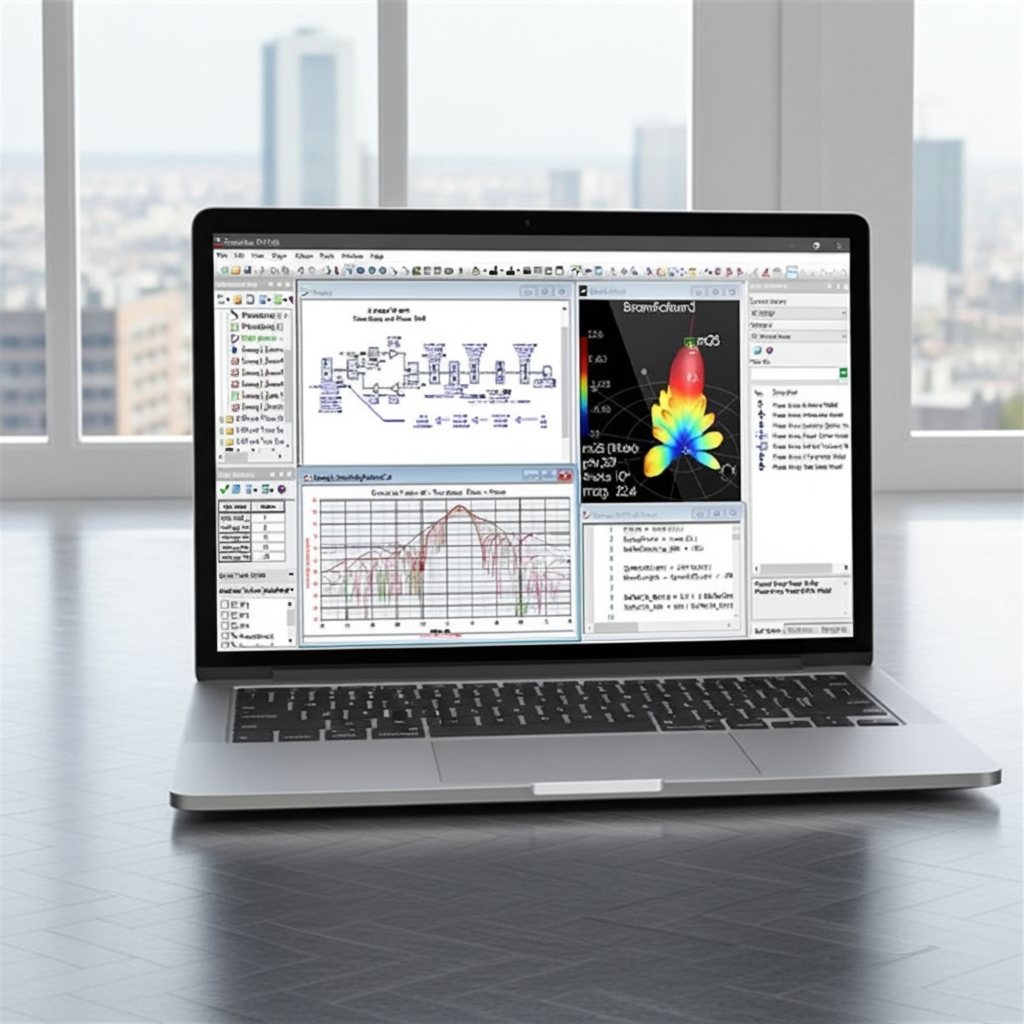There was an issue with saving this content. Please try again.
There was an issue with removing this item from your saved content. Please try again.
SystemVue Fundamentals
Learn how to use SystemVue UI and workspaces, build designs, run simulation analyses, plot results data, work with equations, tune parameters, work with hierarchical designs and organize your work.
About this course
+ Learning Objectives
- SystemVue Basics
- Overview of SystemVue & workspace structure, basic dataflow analysis and sinks, datasets, graphs and markers, schematics, hot keys, part selector, graph and trace properties
- Lab 1: Examine templates, use graph properties, edit sinks and insert components, run analyses and view results, tune parameters using sliders.
- MATLAB Script™ and Signal Types
- Toolbars and windows, organizing the workspace, sampled signals and data types, real, complex and envelope signals
- Lab 2: Add equations to the workspace using MATLAB script, use the RF modulator, set up of an FM analysis.
- Modulated Signals
- The dataset viewer, sources, timing and sample rate control, modulation models and transmitter design, continuous data plots, the filter designer, parameter sync.
- Lab 3: This lab introduces the bit source as the basic source for digital designs, modulated signals, filter designer and other data flow analysis tools.
- EVM, BER and Sub-Circuits
- Receiver Analysis, up and down sampling, hierarchical designs and parameters
- Lab 4: Cross correlation, EVM and BER measurements, creating sub-circuit models.
+ Content Types
- Video Lessons
- Hands-on Labs
- Knowledge Check
+ Who should take this course?
- For system architects and DSP circuit designers
Curriculum10 hr 36 min
-
SystemVue Basics
-
What is SystemVue? 0 hr 6 min
-
User Interface 0 hr 2 min
-
Workspaces and Designs 0 hr 4 min
-
Basic Analysis 0 hr 14 min
-
Lab 1: SystemVue Basics 2 hr 0 min
-
-
MATLAB Script™ and Signal Types
-
Organizing the Workspace 0 hr 6 min
-
MATLAB Script™ 0 hr 8 min
-
-
Sampled Signals 0 hr 6 min
-
Combining Envelope Signals 0 hr 2 min
-
Lab 2: MATLAB Script™ and FM Modulation 2 hr 0 min
-
-
Modulated Signals
-
Modulated Signals 0 hr 30 min
-
Lab 3: Envelope and Modulated Signals 2 hr 30 min
-
-
EVM, BER and Sub-Circuits
-
EVM, BER and Sub-Circuits 0 hr 30 min
-
Lab 4: EVM, BER and Sub-Circuits 2 hr 0 min
-
-
Summary and Next Step
-
About this course
+ Learning Objectives
- SystemVue Basics
- Overview of SystemVue & workspace structure, basic dataflow analysis and sinks, datasets, graphs and markers, schematics, hot keys, part selector, graph and trace properties
- Lab 1: Examine templates, use graph properties, edit sinks and insert components, run analyses and view results, tune parameters using sliders.
- MATLAB Script™ and Signal Types
- Toolbars and windows, organizing the workspace, sampled signals and data types, real, complex and envelope signals
- Lab 2: Add equations to the workspace using MATLAB script, use the RF modulator, set up of an FM analysis.
- Modulated Signals
- The dataset viewer, sources, timing and sample rate control, modulation models and transmitter design, continuous data plots, the filter designer, parameter sync.
- Lab 3: This lab introduces the bit source as the basic source for digital designs, modulated signals, filter designer and other data flow analysis tools.
- EVM, BER and Sub-Circuits
- Receiver Analysis, up and down sampling, hierarchical designs and parameters
- Lab 4: Cross correlation, EVM and BER measurements, creating sub-circuit models.
+ Content Types
- Video Lessons
- Hands-on Labs
- Knowledge Check
+ Who should take this course?
- For system architects and DSP circuit designers
Curriculum10 hr 36 min
-
SystemVue Basics
-
What is SystemVue? 0 hr 6 min
-
User Interface 0 hr 2 min
-
Workspaces and Designs 0 hr 4 min
-
Basic Analysis 0 hr 14 min
-
Lab 1: SystemVue Basics 2 hr 0 min
-
-
MATLAB Script™ and Signal Types
-
Organizing the Workspace 0 hr 6 min
-
MATLAB Script™ 0 hr 8 min
-
-
Sampled Signals 0 hr 6 min
-
Combining Envelope Signals 0 hr 2 min
-
Lab 2: MATLAB Script™ and FM Modulation 2 hr 0 min
-
-
Modulated Signals
-
Modulated Signals 0 hr 30 min
-
Lab 3: Envelope and Modulated Signals 2 hr 30 min
-
-
EVM, BER and Sub-Circuits
-
EVM, BER and Sub-Circuits 0 hr 30 min
-
Lab 4: EVM, BER and Sub-Circuits 2 hr 0 min
-
-
Summary and Next Step
-
